Take a look inside the most powerful physics machine on Earth
The first thing you see when you walk into the building that houses the Control Center is a reminder of what the collider looks like underground.

This is what the collider looks like underground. It's housed in a tunnel 328 feet underground so that stray radiation doesn't reach the surface. The tunnel that houses the LHC is about 16 miles long.
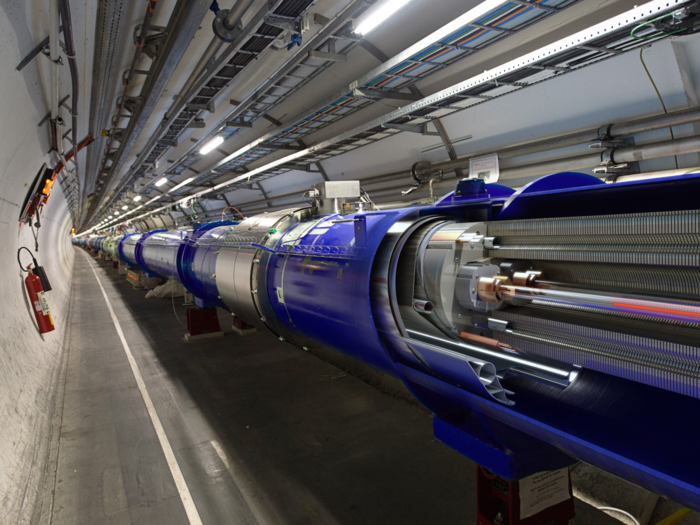
Source: CERN
The Control Center is crucial for the operation of the LHC. Dozens of screens display the information necessary to monitor the collider's activity.
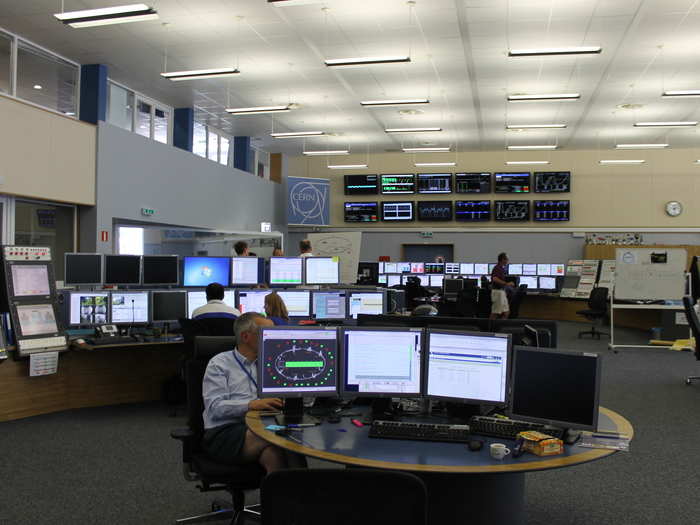
The screens show measurements and information coming in from the accelerators, schematic diagrams and synoptics of the electrical network in the machines, and alerts of possible emergencies or technical issues.
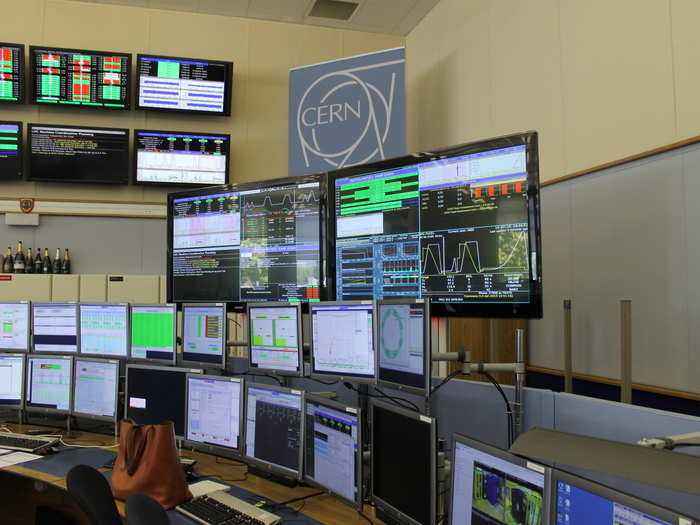
Source: CERN
The room is organized in the shape of a quadruple magnet, and each pod is dedicated to a different machine, so more than just the LHC is controlled here.
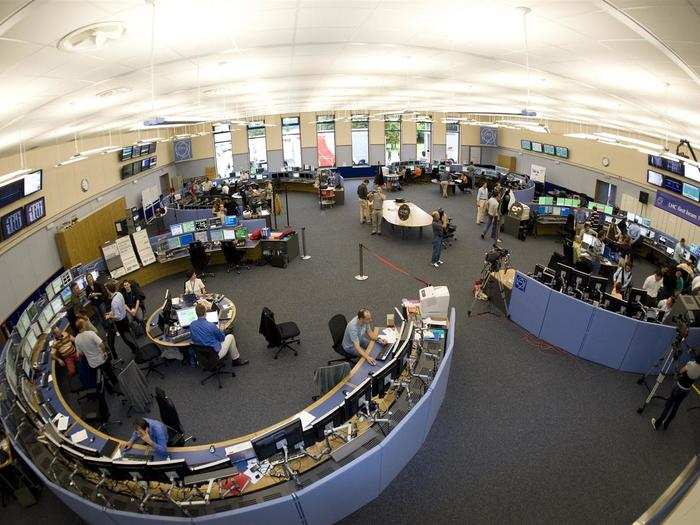
Source: CERN
Every particle accelerator at CERN is run from the Control Center in this room. In the middle of the pods is a conference table for meetings.
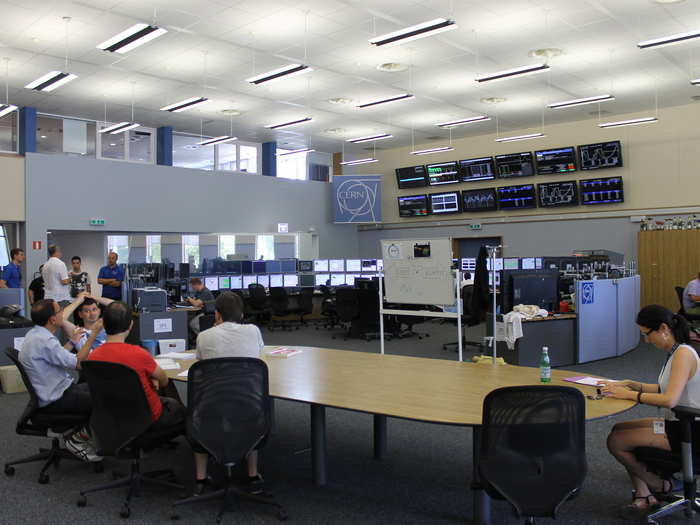
The Control Center is staffed by physicists and engineers who take on shifts to monitor the activity of the LHC and the accelerators. The oldest accelerator operating at CERN is from 1959.
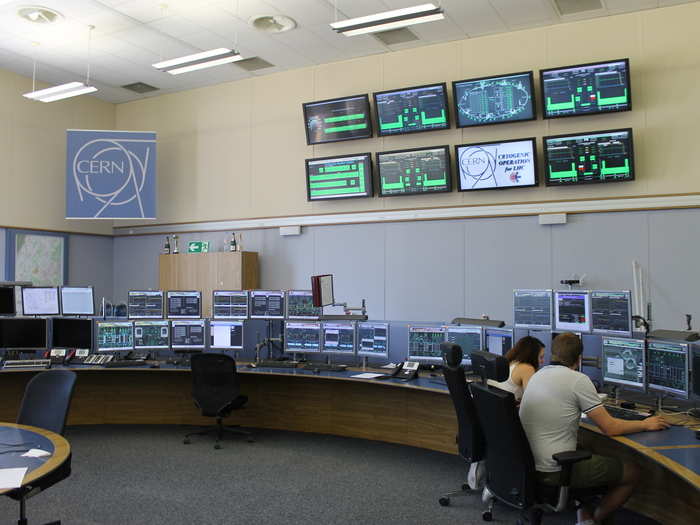
There's a lot of data coming in, and it needs to be monitored 24/7.
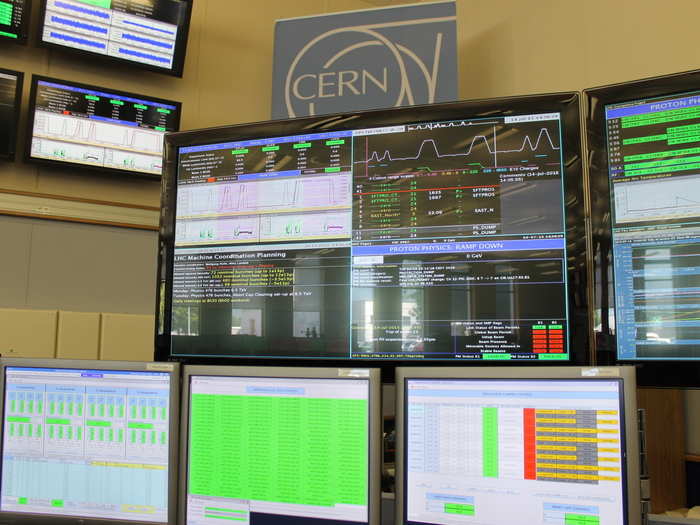
If the engineers and operators who monitor the LHC notice something unusual, there are people on call around the clock who can come in and fix it.
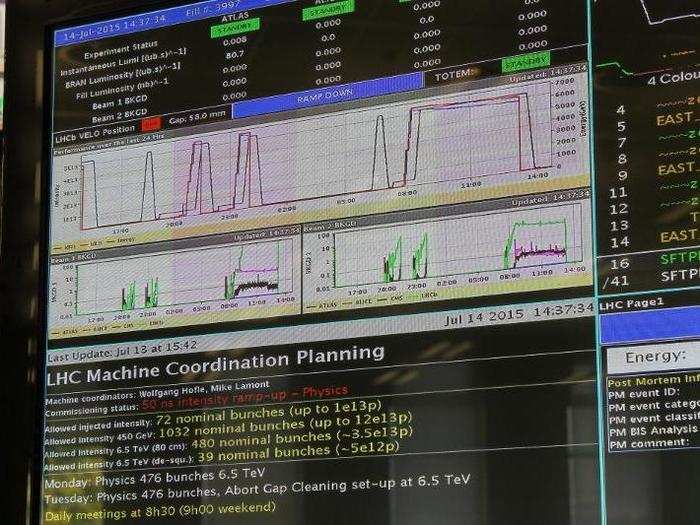
Shifts in the Control Center are eight hours long. When a new person comes on, he or she is briefed on what happened over the past eight hours.
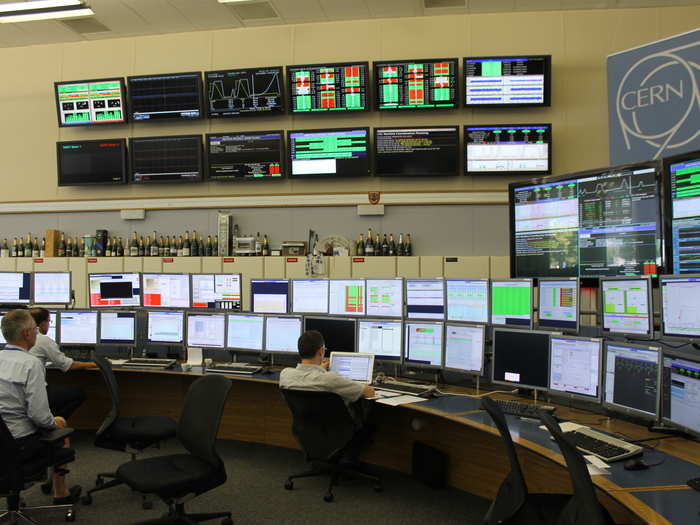
The charts and graphs are pretty unintelligible to those who don't have an intimate knowledge of the inner working of the accelerators.
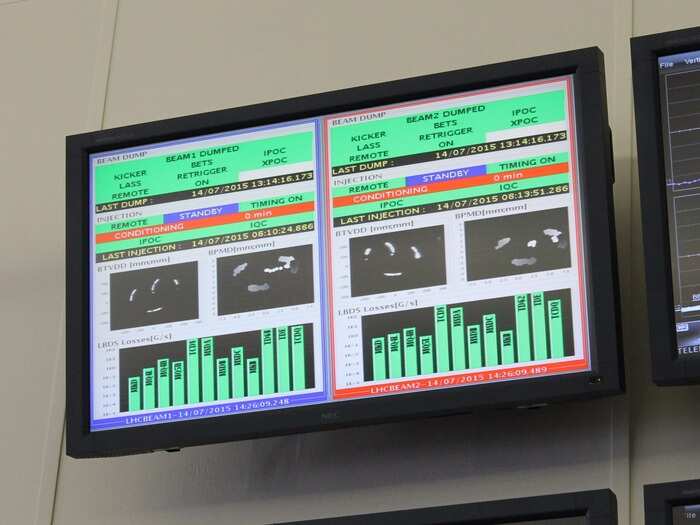
Working in the Control Center is intense, but when the team pulls off a big accomplishment, they celebrate with champagne. The empty bottles line the cabinet tops under this wall of screens.
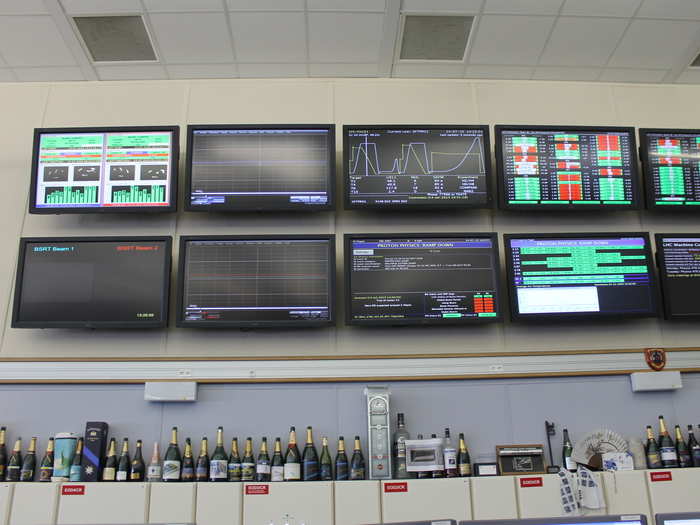
The Control Center isn't always buzzing. It was fairly quiet on the day we were there, and it wasn't packed with people.
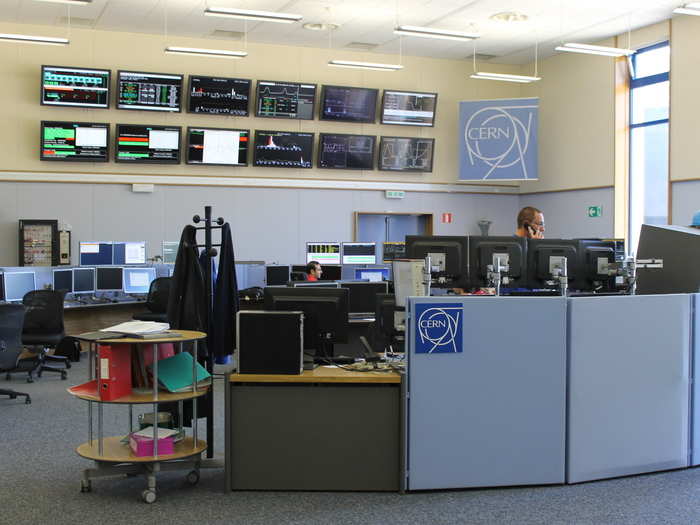
This console is one of the more important displays in the Control Center.
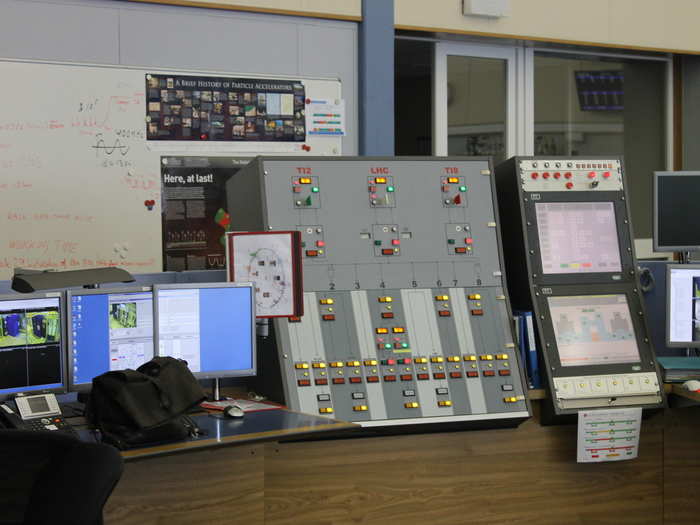
It controls the operation of the LHC and access to the different areas of the collider.
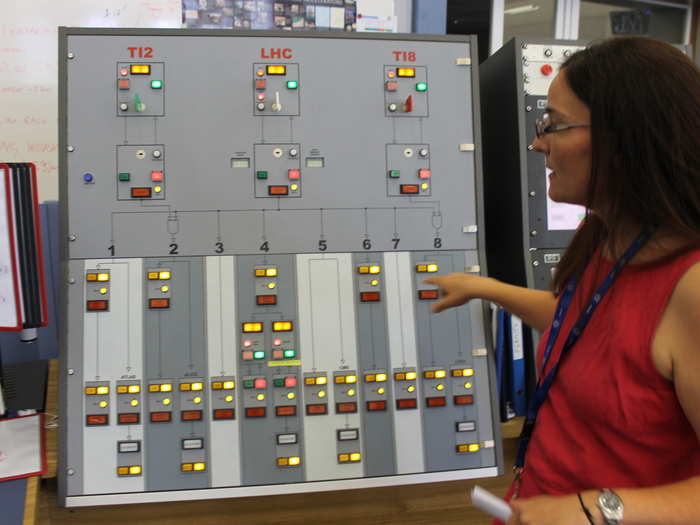
Reaching the collider underground isn't easy. Someone above ground must operate the console to let you in.
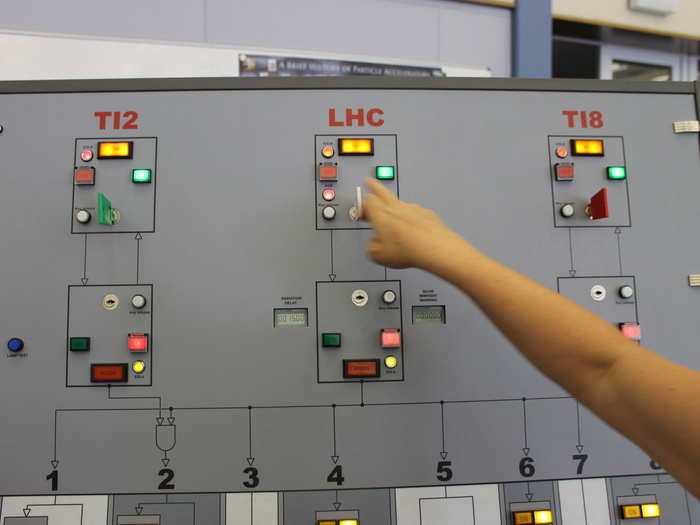
People aren't allowed below ground to access to accelerator while it's running because of the risks of radiation. But sometimes, maintenance crews need to access the collider to fix problems.
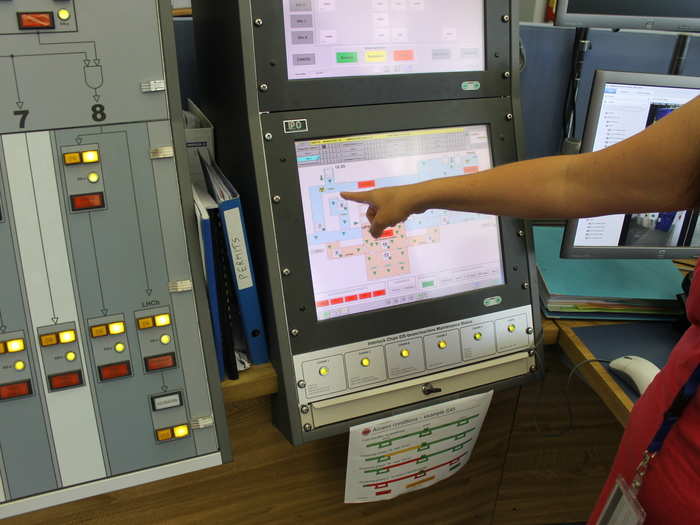
The underground areas are watched by cameras so the staff above ground can make sure there's no unauthorized access.
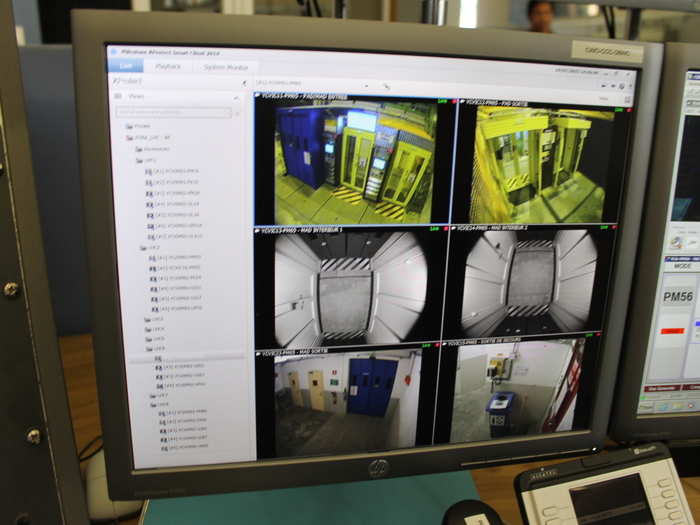
To get down to the LHC (through the doors pictured here), you need to wear a helmet, special shoes, a detector measuring oxygen, and a device that allows you to breathe.
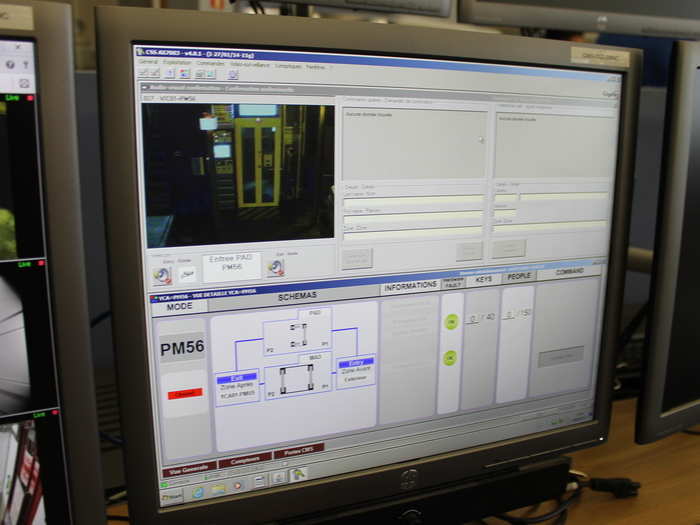
The LHC is due for still more upgrades, and will have another long shutdown period in 2019. The upgrades will take years to complete, but once they're done, the LHC will be able to accommodate 10 times more particle collisions than it does now.
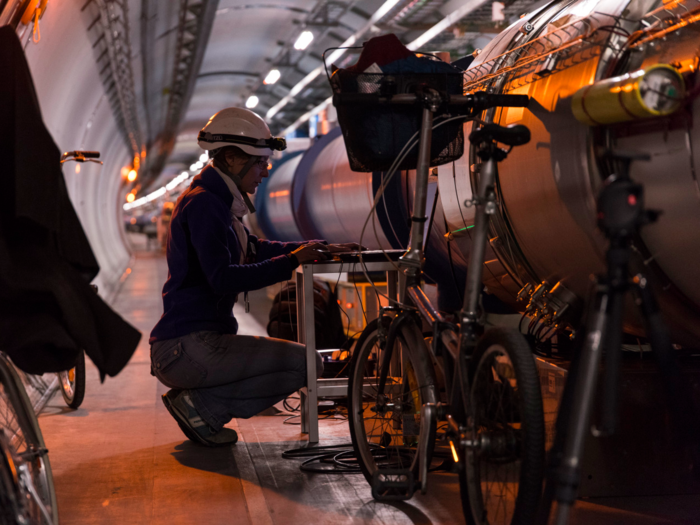
Source: Engadget
Popular Right Now
Popular Keywords
Advertisement